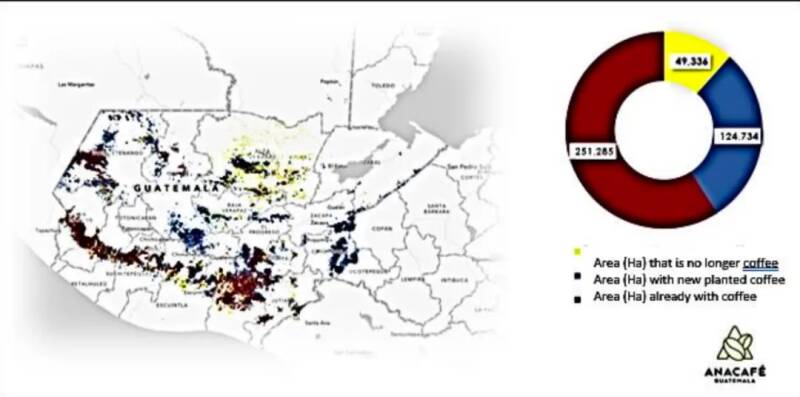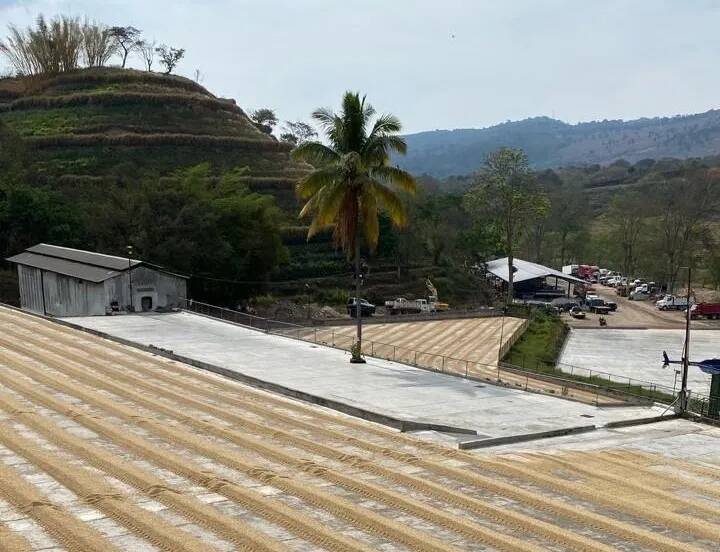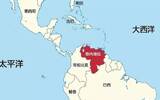Guatemala reports it will expand coffee planting, but it is still facing difficulties
Recently, the National Coffee Association of Guatemala (Ancafe) announced that it plans to collate a comprehensive geographical survey last year and redraw the coffee map of Guatemala.
Currently, according to the new coffee map developed by cafe, there are currently 251265 hectares of stable coffee plantations, as well as 124734 hectares of new or previously unreported plantations, minus 49336 hectares of areas where coffee is no longer grown.

And statistics show that Guatemala currently has 354 large farmers (0.28% of the total output), 3636 medium-sized farmers (3%) and nearly 97% of small farmers, and each group contributes 25% and 31% of the 44% harvest respectively.
In addition, the coffee planting area of Guatemala 2024 Compact 25 market year is estimated to be 376000 hectares, with 1.6 billion mature trees. At the same time, however, it was pointed out that although the acreage and harvest area had increased, the yield had not increased, so at present, coffee cultivation in Guatemala still needs to pay attention to quality and sustainability.

Ancafe said that 97% of Guatemalan coffee farmers are currently facing high fertilizer costs, labor shortages and lack of coffee processing infrastructure.
As global fertilizer prices rise, increasing costs, many small-scale farmers can only reduce fertilizer use, which will affect current and future coffee harvests. And more and more farmers are looking for low-cost alternatives at all stages of coffee production.
In addition, small farmers lack the infrastructure to process coffee, so they can only rely on lazy intermediaries and some large farms, but larger farms have to pay 10% more than middlemen, further increasing the costs of small farmers.
In addition, most small farmers sell coffee as cherries, which cost between $21 and $22 per 100 pounds in 2023 / 24, which is much lower than the price of raw beans.
Moreover, in the current coffee market, the price gap between boutique coffee beans and commercial coffee beans is narrowing, rising from $18 to $3 now, a trend that is bad for Guatemalan coffee farmers who mainly produce boutique coffee.
However, cafe is working to promote services and sustainable profit programs to support coffee farmers, with 21358 hectares of land and 3282 coffee revenues.
And promote the cultivation of robusta coffee, increase the diversity of farmers and increase income. At present, the Arabica variety accounts for 99% of the total output in Guatemala, and the Robusta variety is about 1%, which is on the rise.
In addition to the current difficulties, the most urgent is the coming rainy season, which may be more violently affected by La Nina. According to the Guatemalan meteorological department, the rainy season will begin in mid-May, will intensify in June and July, and will usher in more than normal rainfall.
According to forecasts, the average accumulated rainfall in the northern horizontal zone of Guatemala, the western Caribbean, the southern central highlands, the Boca coast and the Pacific will be higher than normal. In particular, the capital Guatemala City and its surrounding areas may be affected by the storm.
There are many coffee producing areas in these areas, and torrential rains may cause disasters such as floods or landslides. in this regard, the municipal government has started work such as cleaning drains, but other people and farms also need to take preventive measures.
Important Notice :
前街咖啡 FrontStreet Coffee has moved to new addredd:
FrontStreet Coffee Address: 315,Donghua East Road,GuangZhou
Tel:020 38364473
- Prev

Introduction to varieties grown in the coffee producing areas of Venezuela in South America
In South America, the soil and growing conditions are very suitable for growing coffee, so there are many coffee-producing countries, such as Colombia, Ecuador, Brazil, Peru, Venezuela and other countries. Among them, Venezuela is less well-known, but it can still produce high-quality coffee. Venezuela Committee
- Next

Coffee costs 1.5! Why hasn't the boss gotten rich yet?
▲ Click to pay attention| Daily Boutique Coffee Culture Magazine Coffee Workshop Recently, some netizens saw such an advertisement at an exhibition. The advertisement marked the cost prices of four common coffee drinks in coffee shops currently, of which the lowest cost price is 1.5 yuan. Ice American, the highest is a raw coconut latte of 4.2 yuan. Lenovo
Related
- What ratio of water temperature and ground does the smart cup method use to press coffee? The difference between brewed coffee and filtered coffee?
- What is the standard process for the purpose of coffee cup testing? What is the difference between hand-brewed coffee and cup testing?
- How to use hand-brewed coffee paragon small golden balls? How does cold coffee lock in the aroma of coffee?
- Is American coffee black? What is the difference between American coffee and drip coffee?
- Unexpected! Well-known tea beverage brand Lele Tea will withdraw from the Zhengzhou market!
- Starbucks enters the fashion and beauty industry?! Netizen: Give me an ice American eye cream
- Why can American refills for free? The difference between Americano and American drip pot coffee
- Being chased out of the rain in front of Starbucks?! Store: Sheltering from rain under umbrellas poses a safety hazard
- The white moonlight has changed?! Lucky launches "Big Winter Pear American"
- Hand-brewed coffee three-stage method, high-sweet and universal brewing method to share! What does the high sweet water level of hand-brewed coffee mean?

